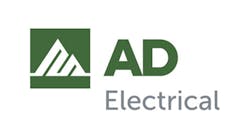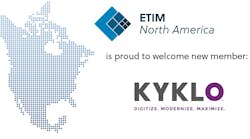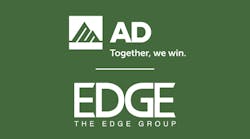A booming market in upscale housing and the rise of the home office are driving sales of in-home systems from data cable to lighting controls, but will home automation follow suit?
Remember six or seven years ago when we said that just around the corner everybody was going to have automation in their homes, and told you how distributors could clean up in the process? Well, we doubt it's any fault of yours, but the revolution has not yet materialized.
It's fun to imagine a world where every home would have an interactive central controller that responds to voice commands, adaptingyour environment to your needs as you go through your day. Already systems are on the market that reliably will adjust lighting, temperature controls, audio, video and security systems, even appliances, at the touch of a button or the tripping of a motion sensor. These systems will greet you as you come in the door with a lighted path through the house, tune your stereo to your favorite radio station, download tomorrow's weather forecast and today's closing stock prices off the Internet, adjust the temperature in the rooms you're most likely to use, run your bath, maybe even warm your brandy and release a dash of fish food for your exotic sea urchins.
After reading some of the claims made by home-control system vendors, we wouldn't be surprised if you could find one that would provide you a spontaneous Karaoke big-band backup after you whistled the first few bars of "New York, New York."
The capabilities and reliability of home-control systems have expanded considerably over the past decade, but sales of home control systems still lag far behind industry expectations. While in high-priced homes, high-end control systems have found some welcome, for a number of reasons, home buyers up and down the mainstream have remained perfectly content in their less-than-smart homes. There are good arguments that intensive home control will never reach the masses. They usually run along the lines of "Who really needs to turn on his toaster from his car phone?" But these arguments may be missing the point. There are considerable benefits consumers can gain by having better control over the electronic and mechanical infrastructure in their homes, and many of the top companies in computer software and hardware, consumer electronics, appliances and climate controls are putting considerable resources on the line in the belief that a new wave of demand will hit soon. There's still a role in this market for distributors who want a piece of the action.
Let's run down a list of the primary obstacles to the acceptance of centralized home control and look at what the industry has been doing to address them.
Complexity. Home automation systems can be extremely complicated, especially in their programming requirements for installation. This is a detriment for dealers as much as for homeowners, because dealers can find themselves tied up with endless callbacks on systems they installed long ago if the system isn't easy for the homeowner to configure and use, says Jim Farinelli, president of Elan Home Systems, Inc., Lexington, Ky. "There's a generally healthy dose of apprehension that people have in full-blown home automation systems. There aren't as many people doing it as one would hope, so the challenge for all the manufacturers is to develop easy-to-use setup and installation software tools and a very robust hardware design that would prevent you from having to live with a system once you've installed it and have gotten paid for it, from a dealer's perspective." This is one reason Farinelli suggests for why demand for home automation systems has lagged behind demand for some of the company's other products, such as audio/video and telephone distribution systems.
Cabling. Home automation systems that rely on proprietary cabling create considerable problems in that they can limit the flexibility of the user's system and are extremely difficult and costly to install in existing homes.
The development of reliable methods for using radio frequency and powerline carrier technology to transmit signals is another sphere where advances are beginning to bear fruit. Systems such as RadioRA from Lutron Electronics Co., Inc., Coopersburg, Pa., make it much easier for users to retrofit sophisticated controls for lighting and other systems in an existing home without running new wires. A home-network telecommunications company called Intellon has raised the bar for powerline carrier communications with its trademarked "No New Wires" system capable of transmitting signals at Ethernet speeds of 10 Mbps.
The remarkable spread of interest in in-home computer networking is also likely to drive demand for expanded home-control systems. According to Parks Associates, a market research firm based in Dallas, Texas, that studies trends in home automation, nearly 20% of all homes have multiple personal computers today. Surprising even the researchers, several of the firm's recent studies have shown that of those multiple-computer homes, between 20% and 30% report that they already have some form of computer networking in place.
Installation of structured wiring in new construction is "just beginning to turn the corner," says Kurt Scherf of Parks Associates. His forecasts suggest that, by 2004, 40% of new homes will include structured wiring for computer networks.
Communications. Another major complicating factor for years was a battle over technical standards for communication and interaction among devices in a home. A number of organizations have cropped up just over the past couple of years to address this issue, searching for an open standard that will allow products from any manufacturer to communicate with any other.
One of these is the CEBus Industry Council (CIC), which oversees development and application of the CEBus open communication standard. CIC has created the Home Plug & Play (HomePnP) group dedicated to establishing protocols for control at the device level. HomePnP (www.cebus.org), which will test and certify products to its standards, has attracted backing from industry heavyweights such as Microsoft, AT&T, Intel, IBM, Compaq, Honeywell, Hewlett Packard, Lucent and Leviton. Another group with equally substantial backing is Home API (www.homeapi.org), which is creating a set of application programming interfaces that let personal-computer software communicate with and control home electronics and appliances.
The emphasis throughout the computer and electronics industries on developing open plug-and-play standards is having an impact and may prove to be the key to driving down prices and making interoperability a simple matter, says Kurt Scherf of Parks Associates. "With the introduction of low-cost plug-and-play devices...it should reduce cost by implementing a common application language."
Other information technology developments such as the use of Internet protocols (IP) within home computer networks and the development of XML (extensible mark-up language) as the next level of Internet content description also promise to simplify the workload of control and communications down the road.
Cost. With plug-and-play standards in the works, the other primary factor that will drive down costs for home control is volume production, and demographics are moving in a direction that suggests volume sales of home-control products could cascade very soon.
One of the hottest potential markets for consumer electronics, and in-home networks in particular, is a subculture of corporate nomads who move every few years from the suburbs of one city to suburbs of another as they make their way up the corporate ladder. The houses they buy, typically in the $250,000-plus range, are among the hottest in new construction nationwide. The buyers tend to choose these houses for comfort, convenience and resale value. In-home Ethernet wiring is becoming a strong selling point because it makes life easier for current residents and enhances resale value as well (see "Wonder Wire" on the next page).
Many of these upwardly mobile families are highly computer literate and place a high value on services such as high-speed, multi-user Internet access, both for the parents' use in a home office or leisure activities and to enhance the education of their children. A growing number of these families have one parent or both working from an office in the home, whether as a self-employed consultant or a telecommuter with duties as easily done by phone, fax and e-mail from the converted spare bedroom as from a cubicle in an office park. Finally, with the booming economy of the past five years, these families have a greater amount of disposable income than they ever have had before. Therefore, they are more likely to indulge themselves in luxury and entertainment goods to ease the burden of so many hours at the office or on the road.
This demographic shift is not yet showing up in sales of home automation systems, says Scherf of Parks Associates. Most people who are willing to invest in advanced systems for their homes are more likely to look at individual systems-Ethernet, home theater, whole-house audio/video or telephone systems, security, zoned temperature control, in some cases lighting systems. But efforts of groups such as Home API and Home Plug & Play seeking to simplify the interoperation of these systems are expected to help.
Some manufacturers such as Lightolier Controls, Garland, Texas, are preparing their systems to operate on a stand-alone basis or to be easily integrated in a central control system ahead of the plug-and-play standards. Lightolier's new Brilliance system includes a port by which outside systems can control the lighting in a house using simple ASCI commands, which the company makes freely available to any system developer who wants to work with them, says Walter Ruden, national sales and marketing manager.
Lutron saw a market for its automated dimming controls and is promoting them through the "Ultimate Home Theater Experience," a recently completed display on the electronic home at Walt Disney's Epcot Center in Lake Buena Vista, Fla.
First conceived by Lutron's Marketing Communications Manager, James Renner, three years ago, the 2,700 sq ft display brings together the products of more than 20 other lighting companies. Central to the display is Lutron's GRAFIK Eye controller, which creates various lighting effects by changing the light levels or by using the lights in different combinations. The unit also can interface to a projection screen, audio-video equipment, climate control and security system for an integrated 'total control' system.
By attending demonstrations, visitors can see the possibilities for their own home theater, a $10.64 billion market that continues to grow. According to Rick Schuett, Lutron's vice president for new business development, a number of demographic and societal factors are behind this growth. A recent national survey that Lutron conducted indicates that home theaters topped greenhouses and home fitness centers as the most-popular home improvement project.
"Consumers want their entertainment centers to have perfect sound and video," Schuett adds. "These elements are crucial, of course, but even when those two components are in place they're still missing the experience of a theater, which is only possible with lighting controls."
Home automation systems developed by familiar electrical manufacturers may be the quickest, easiest and most lucrative way for electrical distributors to tap into this market's potential. In addition to Lutron and Lightolier, several manufacturers have home-automation systems or systems that are made to integrate with home control systems. Some examples are Leviton Manufacturing Co.'s recently expanded Decora Home Controls line and Cutler-Hammer's Automated Home Controls.
Some early home automation efforts involving electrical distributors, such as SmartHouse LP and Elan Home Systems, which originally was developed by Square D Co., Palatine, Ill., were predicated on the electrical contractor being the primary installer. Neither worked out in that venue. Elan is still a thriving business in whole-house audio/video and telephone networking, but the electronics market handles most of that now. It turned out that electrical contractors were not the right venue because they don't have consumer electronics showrooms. Farinelli of Elan thinks electrical contractors could still do a lot because of their relationships with builders.
Electrical distributors who stay on top of this trend and stay close to their manufacturers who are developing products to enable it will be in on the ground floor if popularity does finally surge. With the entire computer and electronics industry working on the problem, it seems likely things will begin happening very soon.Note: See the Electrical Wholesaling Online Resou rce Center-www.ewweb.com-for a listing of links to organizations mentioned in this article.








